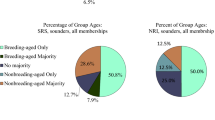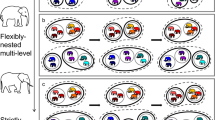Abstract
We report on the genetic evaluation and behavioral study of social organization in the Asian elephant (Elephas maximus). Although Asian elephants and African elephants (Loxodonta africana) were previously thought to have similar social organizations, our results demonstrate a substantial difference in the complexity and structure of Asian elephant social groupings from that described for African savanna elephants. Photographic cataloging of individuals, radio telemetry, and behavioral observations in Ruhuna National Park, Sri Lanka, enabled us to assign associated females and young to four groups with overlapping ranges. Genetic sampling of individuals from the four groups in Ruhuna National Park and three other groups in surrounding areas, conducted through PCR amplification and sequencing of mitochondrial DNA from dung, supported the matriarchal nature of female groups and the lack of inter-group transfer of females. Behaviorally and genetically, the identified social groups were best described as ”family groups”. We did not find any evidence for the existence of social groups of higher complexity than family groups.
Similar content being viewed by others
Author information
Authors and Affiliations
Additional information
Received: 25 March 2000 / Received in revised form: 28 March 2000 / Accepted: 1 April 2000
Rights and permissions
About this article
Cite this article
Fernando, P., Lande, R. Molecular genetic and behavioral analysis of social organization in the Asian elephant (Elephas maximus) . Behav Ecol Sociobiol 48, 84–91 (2000). https://doi.org/10.1007/s002650000218
Issue Date:
DOI: https://doi.org/10.1007/s002650000218




